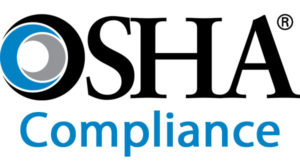 The Occupational Safety and Health Administration (OSHA) is becoming active here in Denver, Colorado, and has plans to inspect even more marijuana businesses. Even though marijuana businesses may not be federally supported, owners still must adhere to and comply with all federal laws and regulations for protecting their employees.
The Occupational Safety and Health Administration (OSHA) is becoming active here in Denver, Colorado, and has plans to inspect even more marijuana businesses. Even though marijuana businesses may not be federally supported, owners still must adhere to and comply with all federal laws and regulations for protecting their employees.
Under OSHA law, employers have a responsibility and obligation to provide a safe workplace. As many marijuana businesses have grown rapidly, faster than regulatory authorities can keep up, compliance with OSHA is critical for a marijuana business to survive.
Fines and citations proposed by OSHA are usually significant and can often close down businesses that are unable to absorb the financial impact. Here are the top 5 OSHA Infractions observed via inspections:
- The facility does not have a written Hazard Communication Plan that describes how it achieves compliance with: a) Labels on Hazardous Containers, b) Material Safety Data Sheets (MSDSs) for all chemicals and pesticides, and c) Hazardous Chemical training for employees.
- All relevant employees have not been trained on hazardous materials in use at the facility before their initial work assignment and when new hazards are introduced and documented as required.
- The facility does not have a formal fire prevention plan (written with more than 10 employees) that addresses major hazards in the facility, accumulation of waste material, maintenance of heat-producing equipment, and names and titles of employees responsible for various parts of the plan.
- Required Personal Protective Equipment (PPE) has not been evaluated and documented, along with associated training plans and verification for employees.
- The facility does not have required OSHA documentation related to workplace injury, OSHA Form 300, or Form 301 if injuries have occurred.
How Can Cannabis Businesses Prepare?
The most viable, low-cost option is to hire a reputable 3rd party compliance inspection company to review overall compliance and support your internal team. The process should be automated and provide a detailed compliance report to track and monitor areas of compliance.
Any areas where these items are missing or lacking usually require a deeper inspection where additional infractions may be uncovered and one violation often leads to another.
Let us know what you think.




Responses